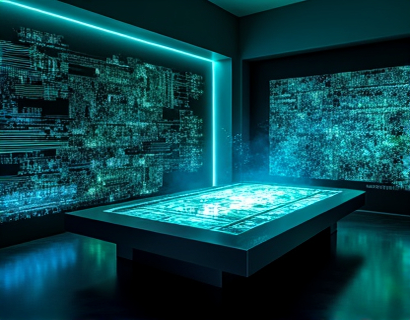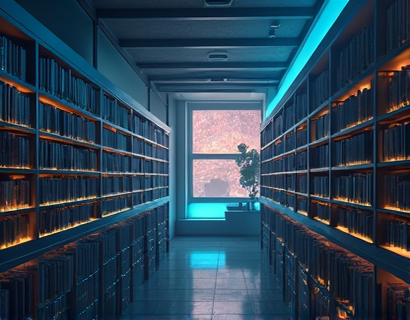AI-Driven Exploration of Egyptian Heritage: Insights and Authentic Artifact Shopping Experience
The ancient civilization of Egypt, with its profound history and cultural richness, continues to captivate the imagination of people around the world. Through the integration of advanced AI technologies, we can now delve deeper into the mysteries of this ancient land, offering unprecedented insights and an authentic shopping experience for artifacts that truly reflect Egypt's timeless legacy. This comprehensive guide aims to provide history enthusiasts and cultural explorers with a thorough understanding of Egypt's heritage, while also presenting a curated selection of authentic artifacts.
Unveiling Egypt's Rich Tapestry with AI
The application of AI in studying and preserving Egyptian heritage has opened new avenues for research and education. AI-driven tools can analyze vast amounts of data from archaeological findings, historical texts, and artifacts, providing insights that were previously inaccessible. These technologies help in dating artifacts, understanding the context of their creation, and even reconstructing lost knowledge. For instance, machine learning algorithms can examine the styles and techniques used in ancient Egyptian pottery, helping to authenticate pieces and trace their origins.
One of the most significant contributions of AI in this field is the ability to create interactive and immersive experiences. Virtual reality (VR) and augmented reality (AR) applications, powered by AI, allow users to explore ancient Egyptian sites and artifacts in a highly engaging manner. These technologies can simulate the grandeur of the pyramids, the intricate details of hieroglyphics, and the daily life of ancient Egyptians, making history come alive for a modern audience.
Deep Dive into Egyptian Culture and History
To truly appreciate the artifacts and the culture they represent, it is essential to understand the broader context of ancient Egypt. This civilization, which thrived along the Nile River, is known for its monumental architecture, sophisticated writing system, and profound religious beliefs. The Egyptians left behind a wealth of artifacts that serve as tangible links to their past, including statues, jewelry, tools, and texts.
One of the most iconic aspects of Egyptian culture is its writing system, hieroglyphics. These symbols were not just a means of communication but also held deep religious and magical significance. AI can help decode and interpret these complex symbols, providing insights into the language and thoughts of the ancient Egyptians. For example, AI algorithms can analyze the frequency and context of certain hieroglyphs to understand their usage and evolution over time.
The religious beliefs of the Egyptians were central to their society, influencing every aspect of their lives. The pantheon of gods and goddesses, each with their own roles and attributes, was intricately woven into the fabric of daily life. AI can assist in mapping the complex relationships between these deities and their associated symbols, temples, and rituals. This helps in understanding the spiritual world of the ancient Egyptians and the significance of various artifacts found in religious contexts.
Authentic Artifact Shopping Experience
For those who wish to own a piece of Egypt's rich history, an authentic artifact shopping experience is invaluable. The challenge lies in ensuring that the artifacts available for purchase are genuine and ethically sourced. This is where AI plays a crucial role in verifying the authenticity and provenance of artifacts.
AI-powered systems can analyze detailed descriptions, images, and even physical attributes of artifacts to cross-reference them with known examples and databases. This helps in identifying forgeries and ensuring that only authentic pieces reach the market. Additionally, AI can trace the provenance of an artifact, providing a transparent and verifiable history from its discovery to the present day.
The shopping experience is further enhanced by detailed descriptions and high-quality images that highlight the unique features of each artifact. AI-generated content can provide background information on the artifact's historical context, significance, and the craftsmanship involved in its creation. This not only enriches the buyer's understanding but also adds value to the purchasing experience.
Curated Collection of Authentic Artifacts
The collection features a diverse range of artifacts that span different periods of Egyptian history, from the Predynastic era to the Roman period. Each piece is carefully selected for its historical importance, aesthetic appeal, and authenticity.
One notable item is a finely crafted golden amulet depicting the goddess Isis. This amulet, dating back to the New Kingdom period, showcases the exceptional skill of ancient Egyptian goldsmiths. The use of AI in analyzing the amulet's composition and design provides insights into its purpose and the techniques used in its creation.
Another piece is a set of ceramic vessels from the Middle Kingdom, known for their intricate designs and functional beauty. These vessels were likely used in daily rituals and offer a glimpse into the domestic life of ancient Egyptians. AI analysis helps in understanding the manufacturing processes and the cultural significance of these everyday objects.
For those interested in religious artifacts, a stone statue of Anubis, the god of mummification and the afterlife, is a highlight. This statue, crafted during the Ptolemaic period, exemplifies the blend of Egyptian and Greek artistic influences. AI-driven insights into the statue's iconography and historical context enhance the buyer's appreciation of this piece.
Blending Historical Knowledge with Shopping
The integration of AI-driven insights with the shopping experience creates a unique and educational journey. Each artifact comes with a detailed digital card that provides comprehensive information about its history, significance, and the story behind its creation. This approach ensures that buyers are not just purchasing an object but gaining a deeper understanding of Egypt's cultural heritage.
The platform also offers interactive features such as 3D models and virtual tours of archaeological sites. These tools allow users to explore the artifacts in context, enhancing their appreciation and knowledge. For example, a virtual tour of the Valley of the Kings can be paired with a virtual examination of a mummy and its funerary artifacts, providing a holistic view of ancient Egyptian burial practices.
Supporting Cultural Preservation and Education
The use of AI in the preservation and study of Egyptian heritage extends beyond individual artifacts to broader conservation efforts. AI can assist in monitoring the condition of artifacts, predicting potential deterioration, and suggesting conservation methods. This technology helps in preserving Egypt's cultural legacy for future generations.
Moreover, AI-driven educational resources can reach a global audience, promoting a deeper understanding of Egyptian culture and history. Online courses, virtual exhibits, and interactive content powered by AI make it possible for people from all over the world to learn about and appreciate this ancient civilization. This democratization of knowledge ensures that the wonders of Egypt are accessible to everyone, fostering a greater appreciation for cultural diversity and historical richness.
In conclusion, the combination of AI technology and a curated collection of authentic artifacts offers a unique and enriching experience for those interested in Egyptian heritage. This platform not only provides valuable insights into the culture and history of ancient Egypt but also supports the preservation and education efforts related to this invaluable part of human history.











































